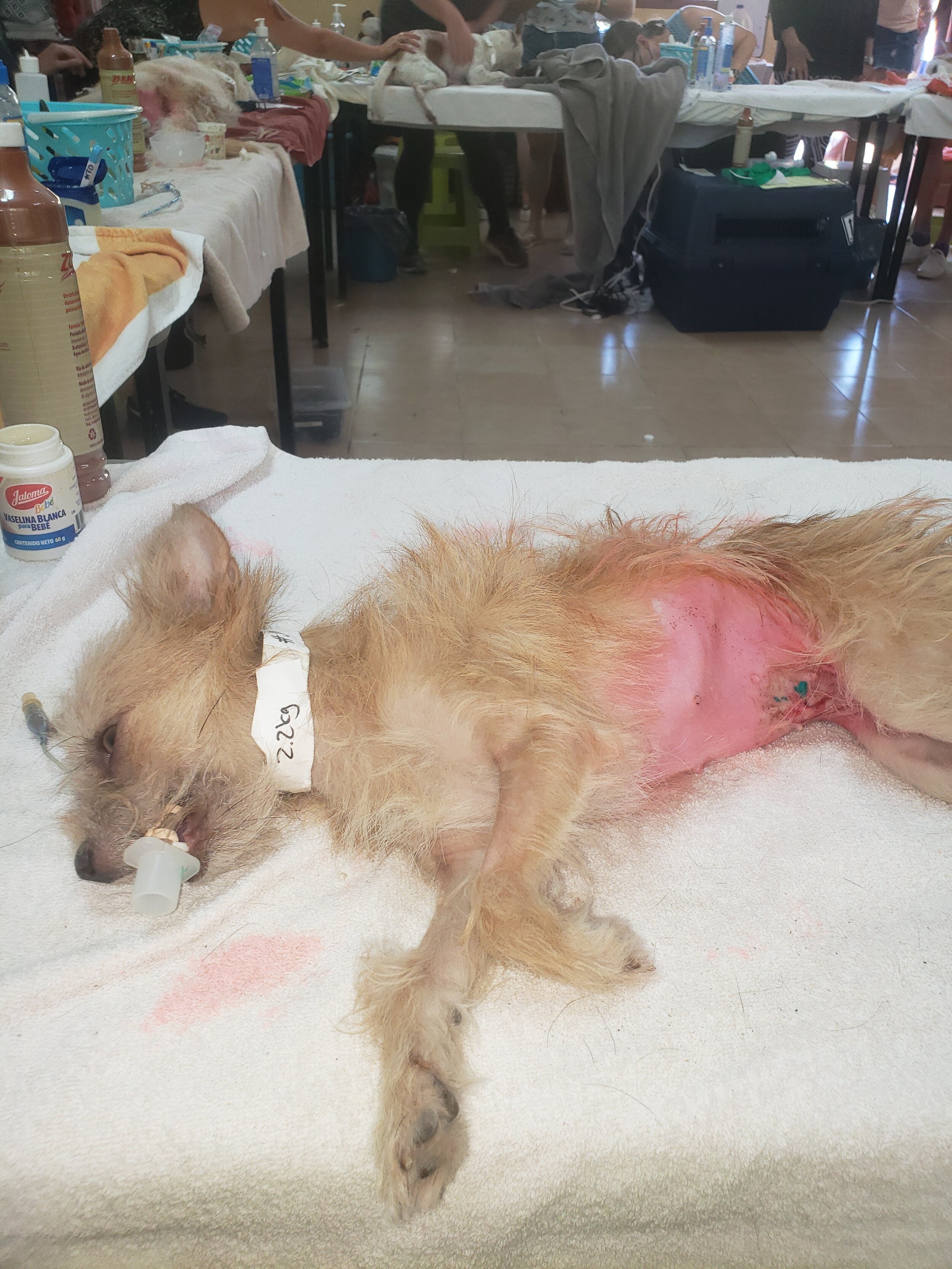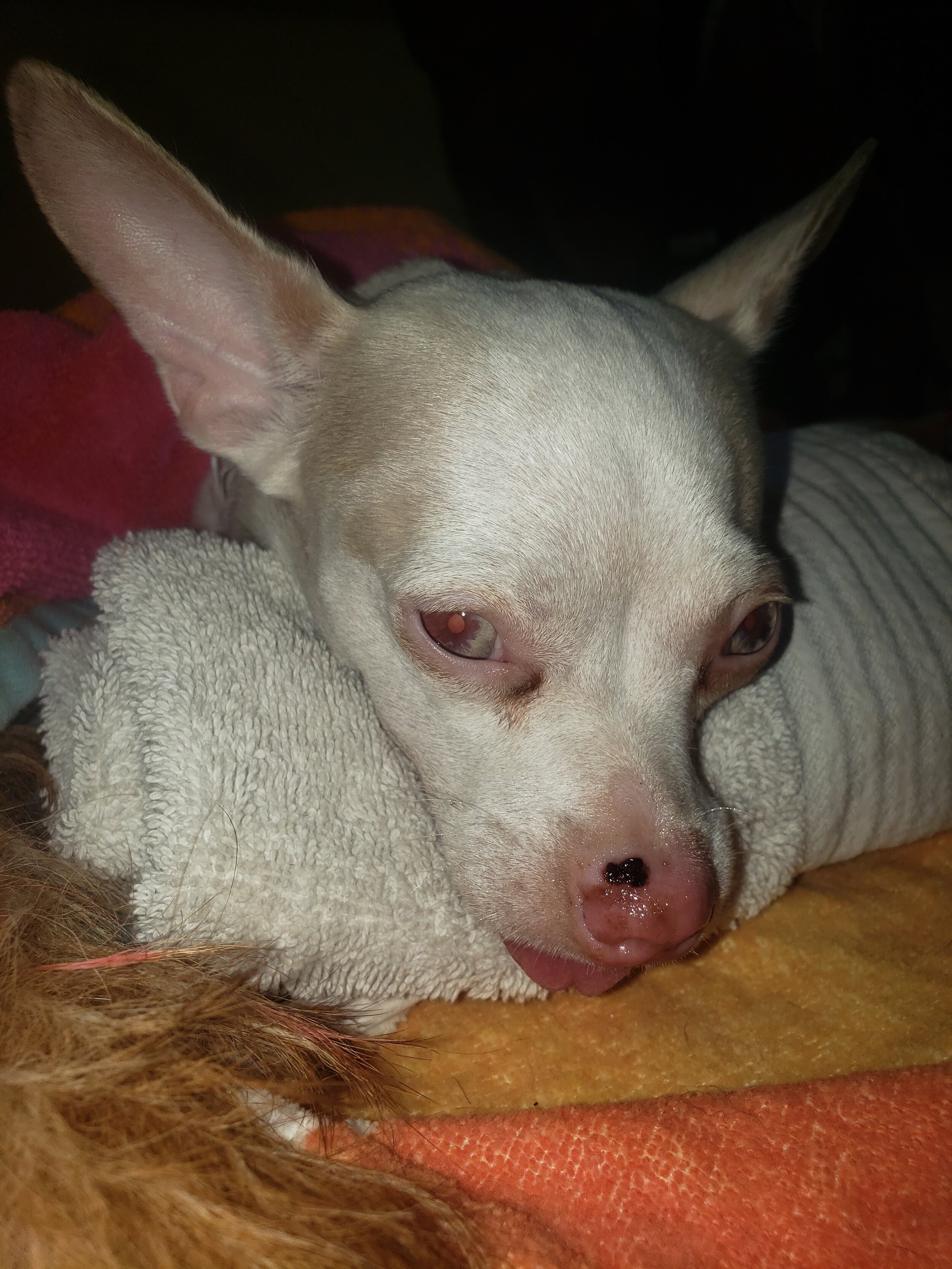Back to the Beginning
Feeling a little freer now that we are fully vaccinated, I decided to sign up and help with a local Spay and Neuter clinic in Chemuyil, a small town, south of where we live. It was a wonderful day. I had, and continue to have, incredible emotions and thoughts about how it went. First, it was so great to see the familiar faces of people eho have been involved since the first clinics 20+ years ago. Equally wonderful were the new and enthusiastic people. In a nut shell, what hit me most was how organized these clinics have become. They are now smooth-running events, nothing like the very first events which I would compare more to a MASH unit! Those were all hands on deck and we just winged it, filling in where needed. Exciting yes, but much more of an adrenaline rush than today’s calmer sense of satisfaction. Another change is how my body, twenty or more years after my first clinic, felt the effects of a full day in recovery. But the twinges were not long lasting and happily they didn’t deter my ability to help.
To those of you who have considered doing a local Spay and Neuter clinic but were afraid to step up, let me assure you there is a need for your assistance and the rewards and satisfaction are likely to be some of the best you will ever feel. I thought it might be helpful if I gave an overview of these clinics for those out there who are considering jumping in. And along the way I’ll highlight some of the needs that exist for volunteer positions and donations.
Obviously, there is ALWAYS the need for money. If you can donate, or help raise funds for these clinics, even if it is just among your friends and family, please do and know that every penny or peso raised goes directly to the needs of the animals. With more money these clinics can not only spay and neuter more animals, but they can also vaccinate and treat for worms, ticks and fleas.
Donate things you might have around your house such as fans, towels, sheets and basic first aid supplies (thermometers, cotton, q-tips, tweezers, Vaseline, hydrogen peroxide, white vinegar, rubbing alcohol). If you have pet crates you don’t need that day they are always appreciated. Prepare lunches or snacks for the volunteers. Fruit, waters, gatorades are always needed as volunteers work in warm conditions all day long.
Share the news. If you see a clinic being promoted on social media it is as simple as clicking “share” and telling your friends.
If you speak Spanish, you can be very helpful with the intake, finding the owners after recovery and general help with translation. If you don’t speak Spanish don’t let that stop you.
A day in the life of a clinic goes something like this. The day before, the clinic volunteers gather to set up the area – intake, prep, surgery, recovery 1 and recovery 2. This is key and a good place for new volunteers to help out and learn more. The clinics start early – 7 or 8 in the morning and usually there is already a line of clients with their pets waiting for the doors to open. As the day goes on it isn’t unusual for members of the team to go and round up strays in town or even out in the smaller communities where transportation is a problem.
At intake, volunteers take the names of the pets and any information. A paper collar is made and placed around the animals’ necks with name, weight, owner, if there is one, and intake number. They also use a red marker to star and make a note if the animal is aggressive to people or other animals. This is one improvement that stood out for me. It was so helpful knowing that, in recovery if we needed to be extra careful as an animal came to. This is a great place for those who speak English and Spanish to help out in the beginning of the day.
Prep is where the animals are prepped for surgery, this is done by Vet students and Vet Techs. If you are a Vet Tech coming to the Riviera Maya, you can always check to see if there is a clinic coming up and offer a day of your vacation.
Surgery is handled by Certified Veterinarians and Vet Techs. Again, qualified doctors and Vet Techs are always needed.
Dog and cat runners are a big part of the clinic, strong men and women are always needed to help transport the animals from surgery to recovery one, and from recovery one to recovery two. If you love animals and can handle hours of lifting and carrying them safely, you may want to consider helping out.
Recovery 1 is where I have worked most often over the years. The animals are brought to recovery 1 still fully asleep. Here we check their temperature, look for flees and ticks, cut their nails and clean their ears and remove ticks if needed. When the time is right, we remove the breathing tubes. We have the animal until they are awake enough to be transported to Recovery 2, where their owner will sit with them until they are able to walk on their own.
In recovery 1 there are trained supervisors to help if anything should go wrong. These trained personnel also administer the vaccines and any flea, tick or deworming medication, if available and needed. You may need to place and rotate smaller dogs whose temperature sometimes drops below normal. The opposite can also happen, a dog or cat can run a slight fever and you will be required to apply ice to the pets.
Runners are used to help locate the owners when the pet is ready to be transported from Recovery 1 to Recovery 2. This sometimes is a slow process as some animals wake up very slowly but in other, rarer instances it can be a mad dash to get the pet up, owner found and a transporter to move a pet that is waking up in a flash. No two animals are alike.
For those who are a little more OCD than I, there are many important jobs, such as filling needles, cleaning equipment and stocking supplies. One of the nicest people I ran across during this last clinic was a volunteer who had the biggest smile that just kept showing up asking if we needed something to drink and, in the afternoon, brought us treats someone had baked. No job here is more important than another, it is a true team effort, and you will see the absolute best in human nature! Something that I found I needed after this long Covid year.
I have such a feeling of pride, that I have truly have no words to describe, but as you know, I will give it a try. It continues to overwhelm me to see the improvements to protocol, procedures in place and most of all over-all improvement in animal wellness. I am very well-aware this is something few people get to witness in their lifetimes. Twenty plus years ago, I was privileged to be a part of a dream and today, though we still have so much more to do, I have been able to see the fruits of those dreams come to be. Education and continual work are needed so we don’t slip back to where we began, and Covid-19 definitely has had a negative effect. No one was able to do clinics for a year and during that time many people fell on hard times and had little extra money for their pets. I couldn’t help but think how much worse things would be if Covid had happened and there never been a ViDAS all those years ago. From ViDAS (previously YARF) many other small and significant local groups have sprung up and that is the true testament to success.
In closing, KUDOS to all those who have ever lifted a finger to help these communities and these animals! And to those who have thought about it but hesitated, please, I encourage you to step up and help in the future.
Next Clinic Dates July 10 & 11 2021 in Akumal
Donation at PayPal.me/sterilizechemuyil












